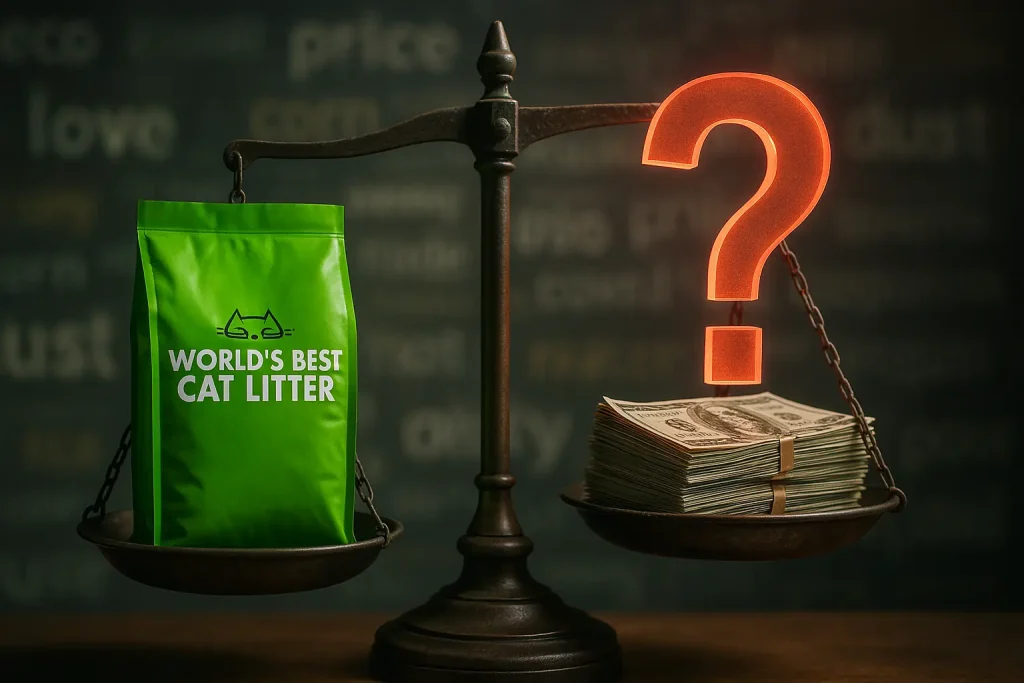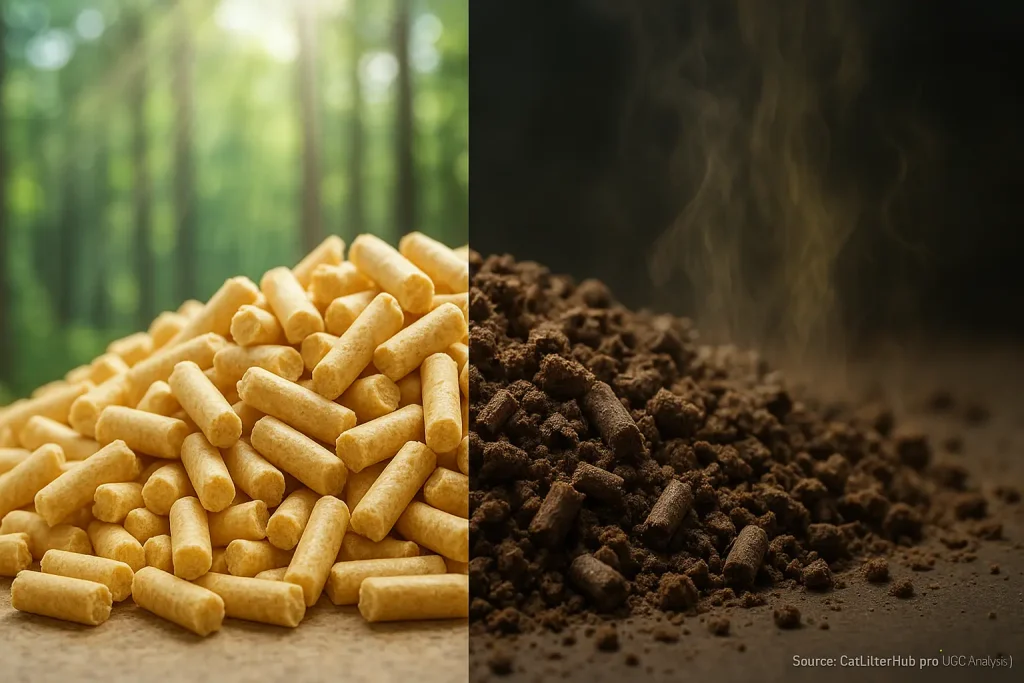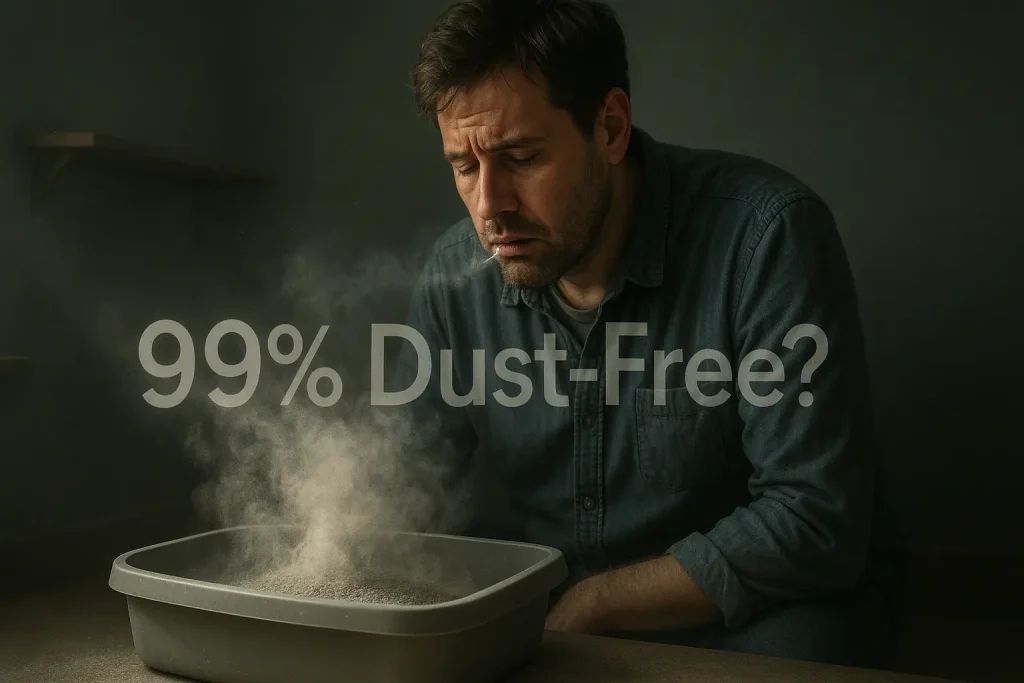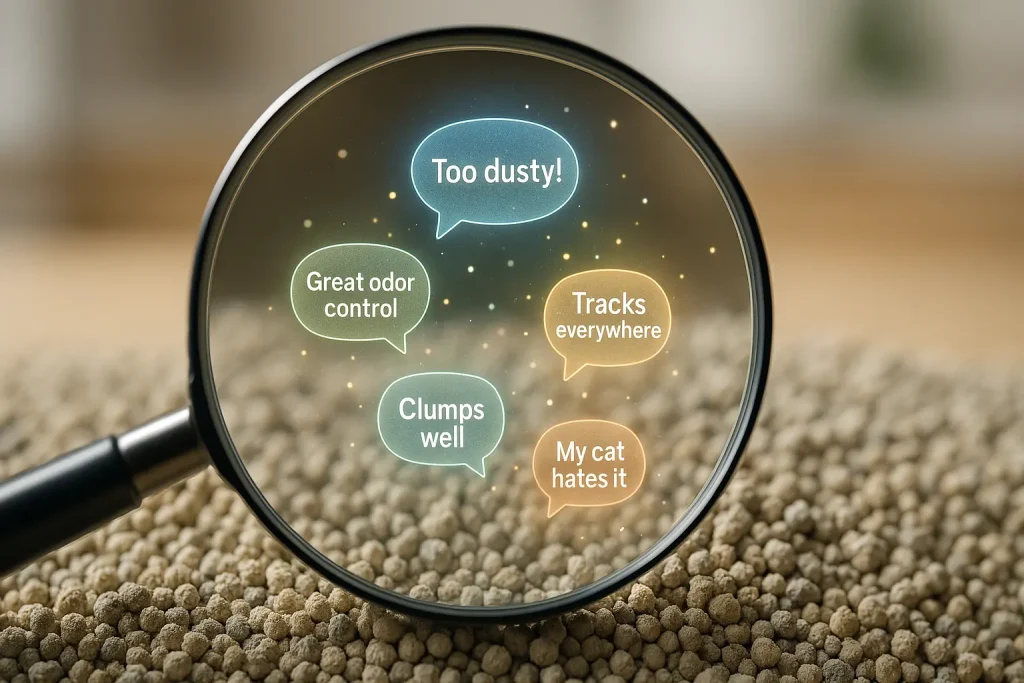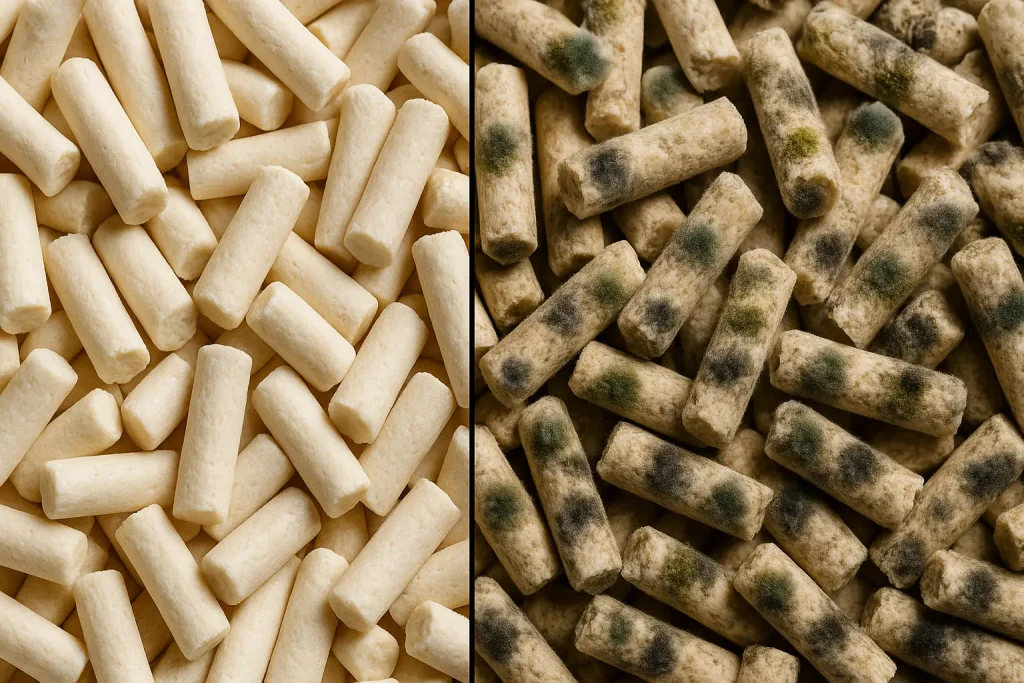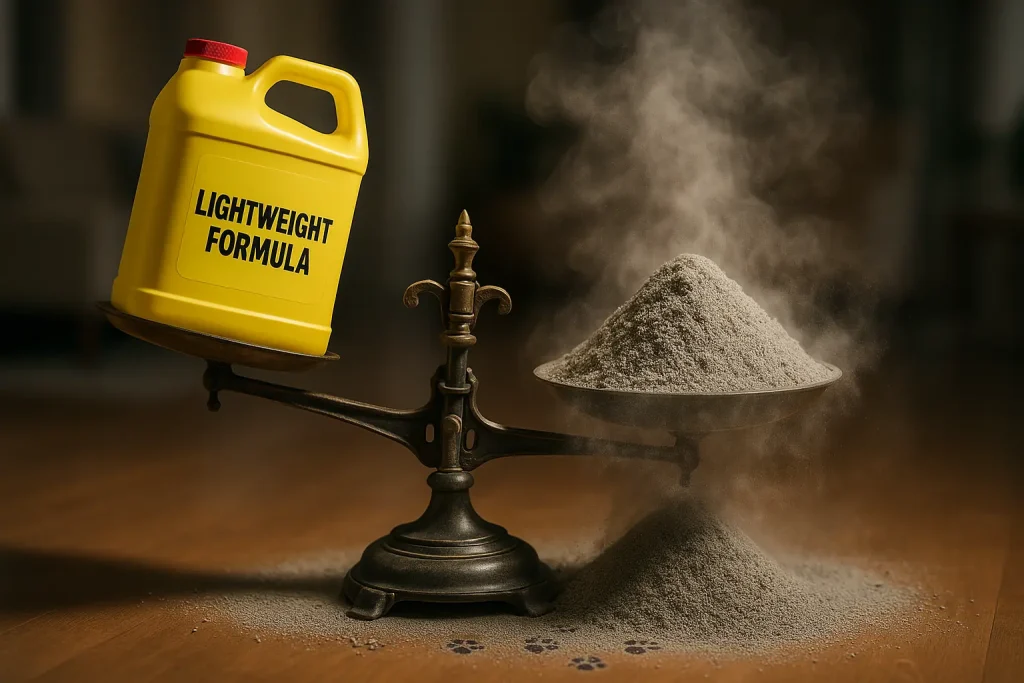The Big Question: What Makes a Litter "Feel" Right to a Cat?
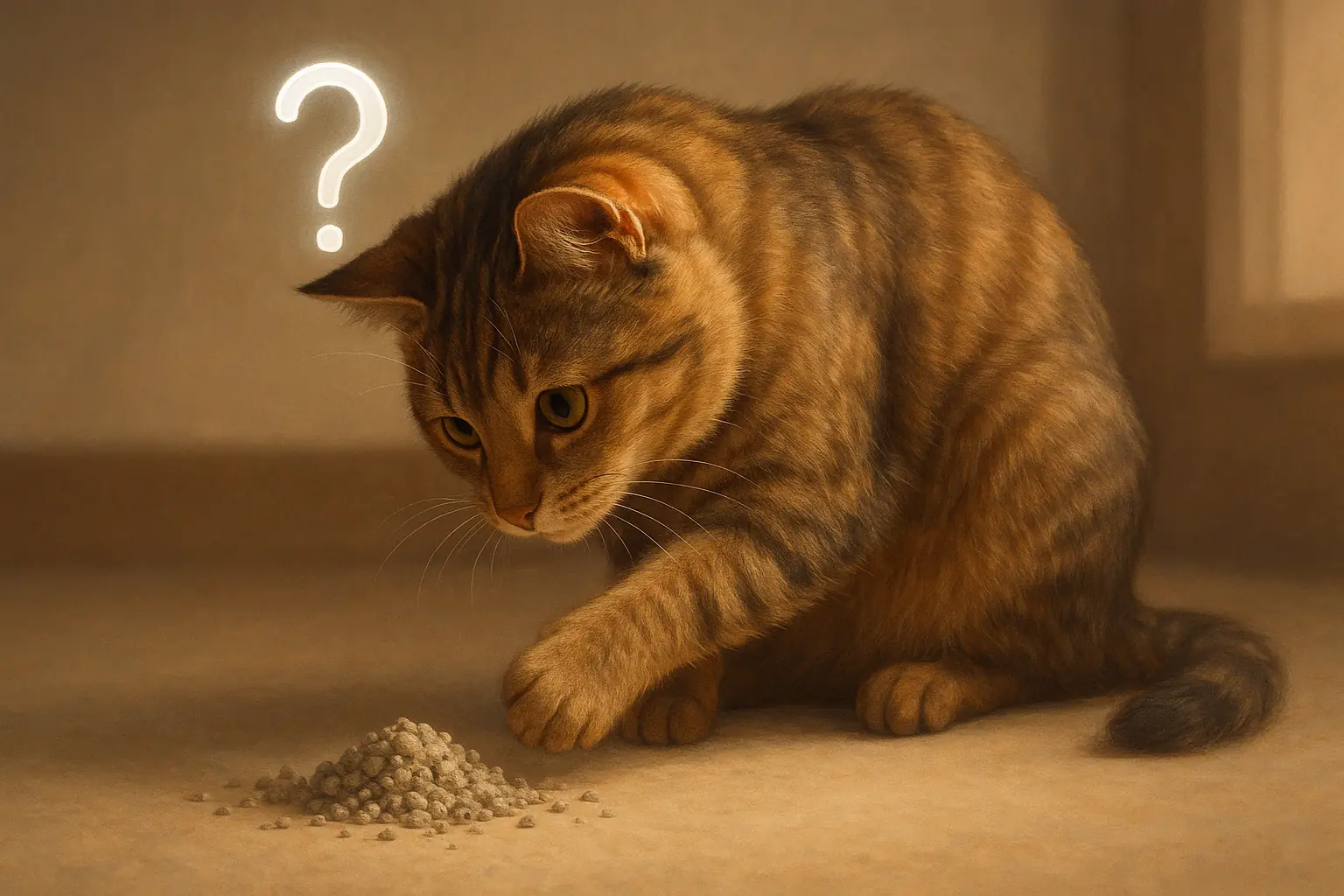
Ever watch your cat meticulously test new litter, then walk away in disgust? What gives? We cannot ask cats directly. Yet, thousands of cat owners share observations online. This shared experience creates a massive database of feline 'votes' by paw.
Litter texture is a huge deal for cats. It often matters more than scent or even clumping for some particular paws. An unsuitable texture can trigger litter box avoidance. Imagine Sarah's confusion: her pristine Persian, Whiskers, suddenly protested outside the box. The new pellet litter felt like walking on Legos to poor Whiskers, a common tale many owners share.
This article sifts through that collective UGC wisdom. We analyze countless owner stories. We uncover textures cats genuinely prefer. We also explore why. These findings, drawn from real-world use, might surprise you.
Interactive Tool: What's Your Cat's Likely Texture Preference?
Litter Texture Preference Finder
Our quiz offers a solid texture starting point. This guidance stems from Cat Litter Hub's analysis of thousands of owner experiences. Every cat is an individual, of course. Use the tool's suggestion as one important piece of your litter selection puzzle. It helps narrow your options considerably.
The real test? Your cat's own behavior around any new litter. Observe them carefully. Do they enter willingly? Or show reluctance? For even more clues, explore our other articles. They detail how to interpret feline body language near the litter box. Cats communicate their preferences clearly.
Fine Grains – The Crowd Favorite? (UGC Deep Dive)
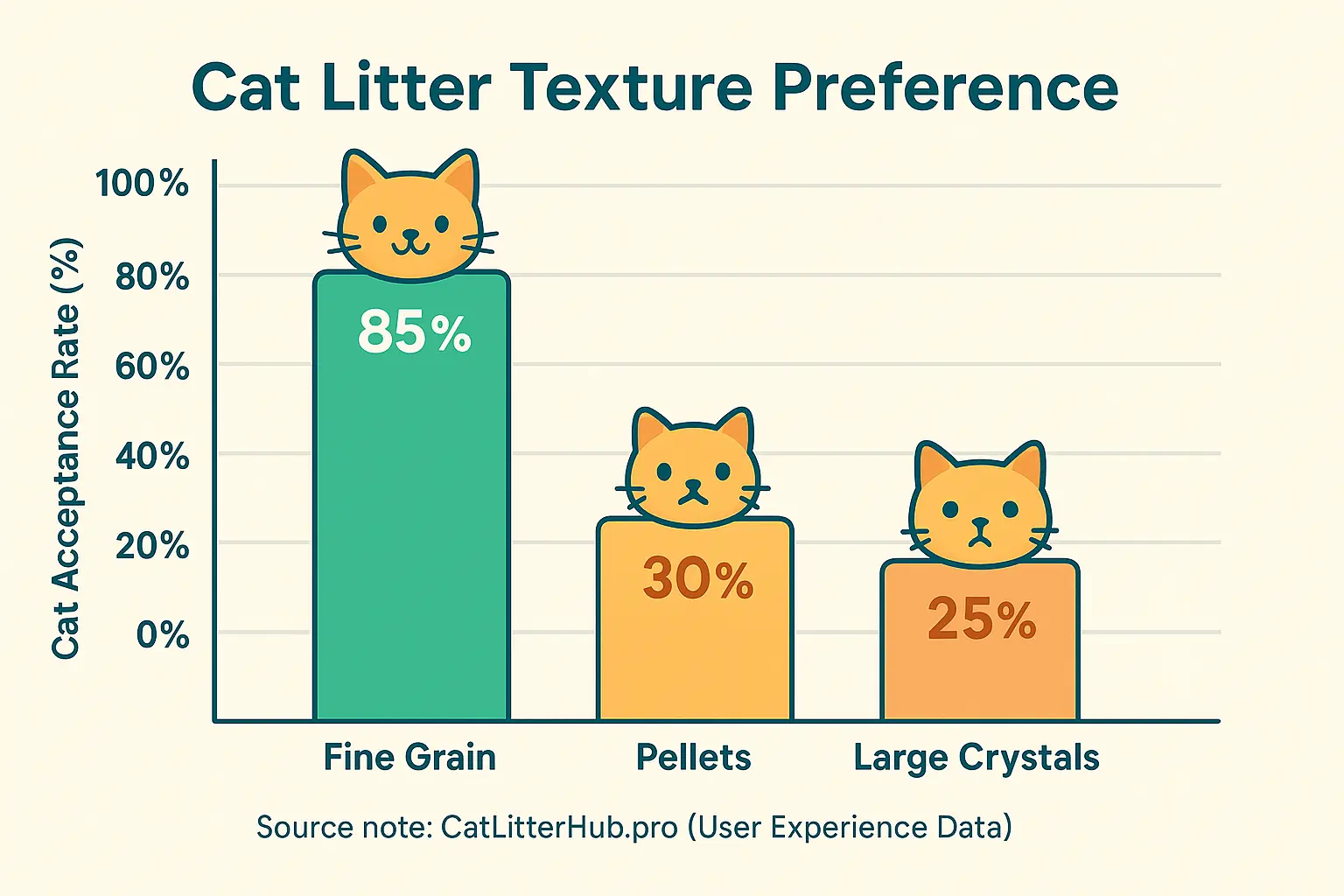
If one litter texture consistently earns 'paw-sitive' votes in user feedback, it is fine, sandy material. Our deep dive into owner experiences overwhelmingly confirms this. What is it about that soft, almost beach-like feel? Cats appear to adore it.
Countless owners describe cats happily, almost blissfully, digging in these fine-grain litters. This energetic digging is not just playful behavior. User narratives strongly suggest it fulfills a deep, ancestral instinct for soft earth. Imagine a cat, after rejecting multiple litters, finally digging contentedly in a fine clay. This scenario appears frequently in user reviews, often ending with immense owner relief.
A subtle, yet important, observation emerges from many user accounts. Cats using fine litters tend to cover their waste more thoroughly. This meticulous covering, users note, often contributes to better household odor control. A small detail. Big impact.
So, what are the tangible benefits users consistently praise? Paw comfort is paramount. Many report this texture is gentler, especially for cats with sensitive paws or those declawed. Easy digging is another highly praised aspect in owner feedback. Furthermore, users frequently link the fine particle size of many such litters to superior clumping action.
The Pellet Problem: Why Many Cats Say "No Thanks!" (UGC Evidence)
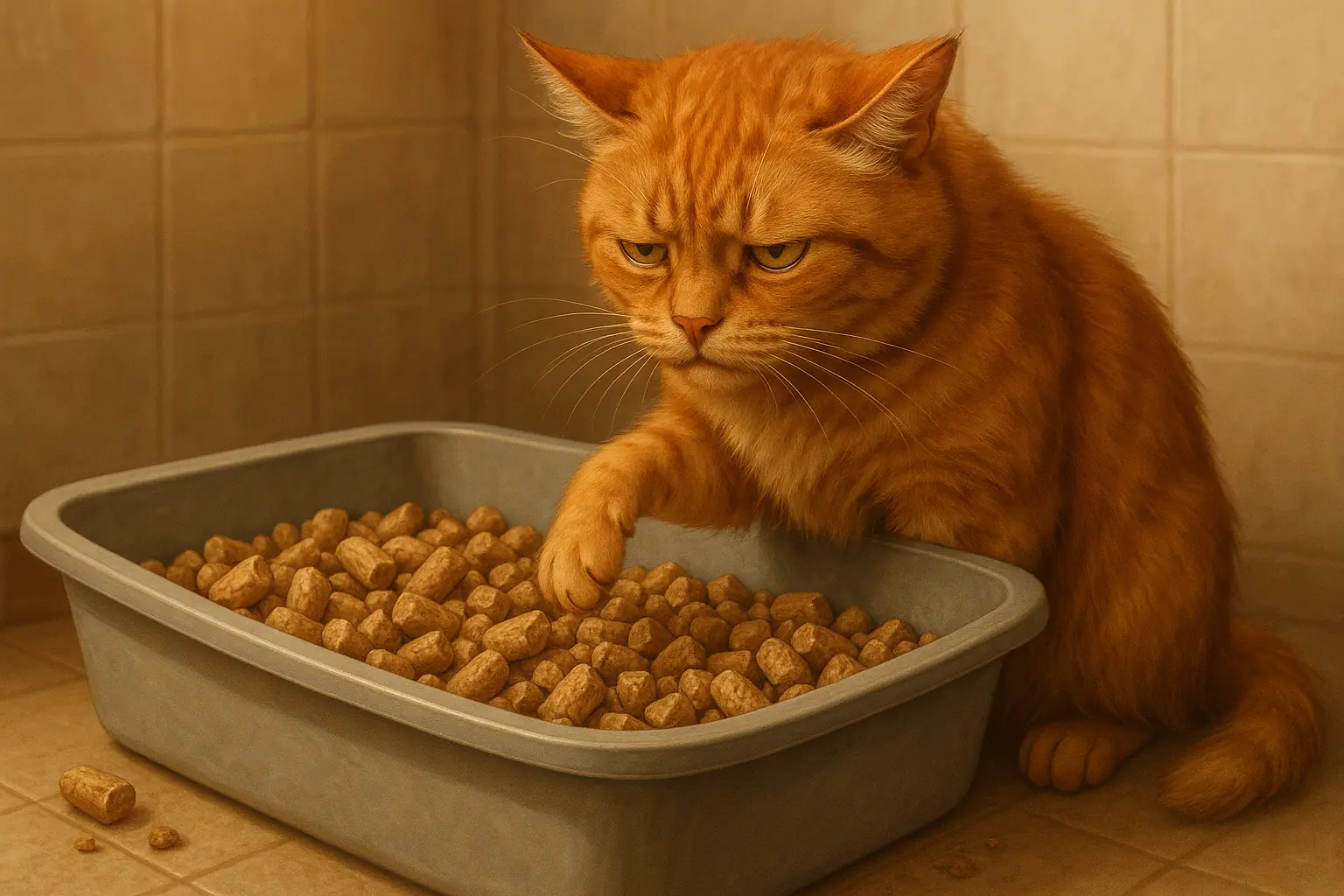
Fine-grained litters offer one end of the texture spectrum. Pellet litters sit at the opposite end. But what happens when litter feels less like a soft beach and more like... well, gravel to your cat?
Many cat owners share their pellet litter woes online. Take Leo, for example. His owner, aiming for an eco-friendly choice, switched to pine pellets. Leo’s response? He started using the bathmat. This is a classic cat protest. He's not alone; countless user reports describe cats gingerly stepping on pellets, shaking their paws, or avoiding the box entirely. This suggests a widespread issue.
The "why" behind this rejection often surfaces in user feedback. Hard, large pellets can cause genuine paw discomfort. It's like walking on Legos, some owners surmise. Cats, with their natural digging instincts, also struggle. User narratives detail cats finding it difficult or unappealing to dig and cover waste in these larger particles. The unnatural feel clearly bothers many felines. Some users even wonder if pellets might trigger unhappy memories of pill capsules from vet visits.
So, while a few cats might eventually tolerate pellet litters, user experiences paint a clear picture. Pellet aversion is a significant, recurring theme in discussions about litter texture. The data strongly suggests this isn't just feline fussiness. It's often a genuine reaction to physical discomfort or an affront to their natural behaviors.
Crystal Litters: A Mixed Bag of Paw Feelings (UGC Reports)
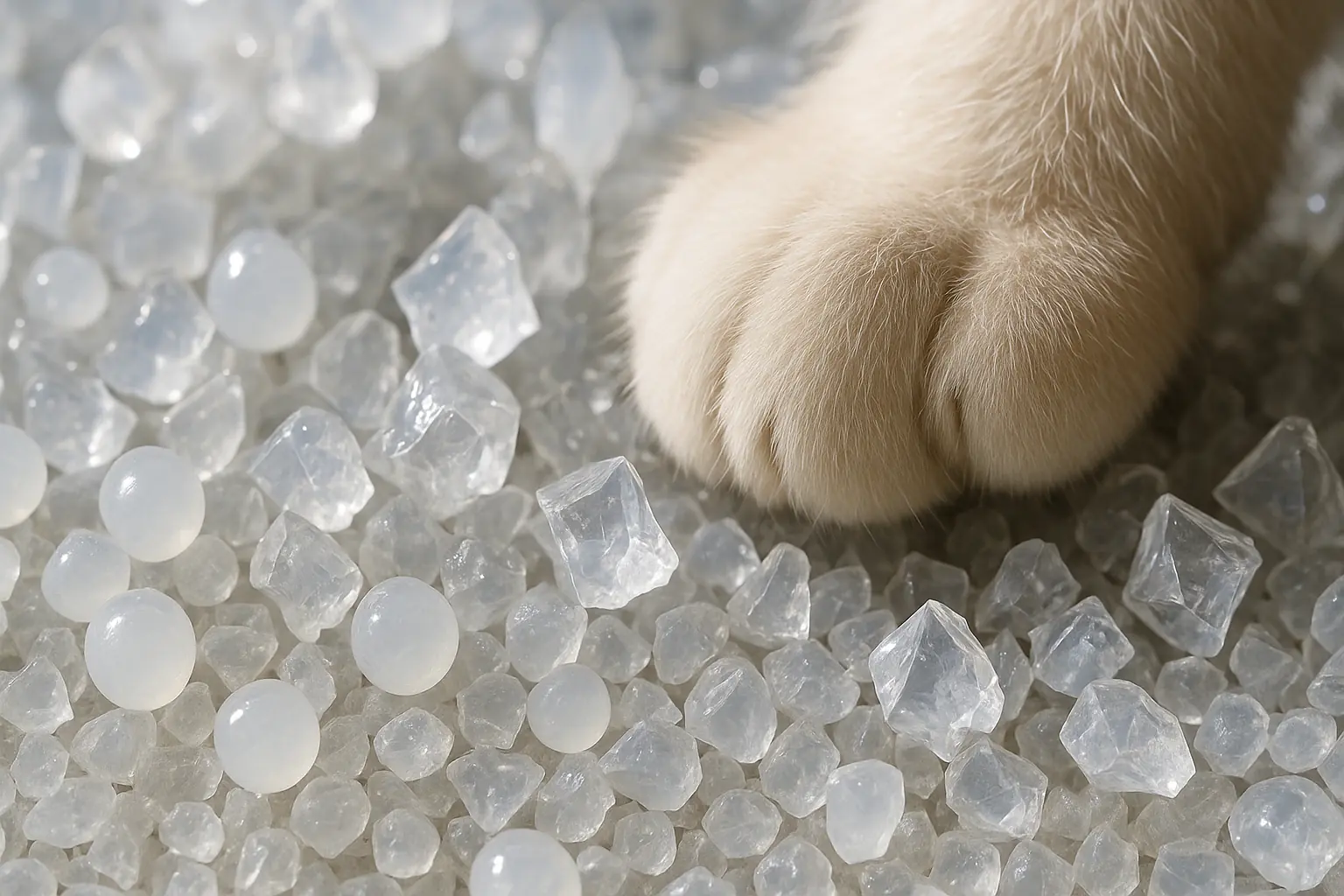
Crystal litters present a distinct texture. These are shiny, often translucent silica gel pieces. For some cats, user reports indicate immediate acceptance. For others? A clear aversion. Cat reactions to crystal litter texture are notably divided, based on extensive owner feedback.
Many cat owners celebrate quick adoption. Their cats took to crystals immediately. These owners often praise the typically lower dust levels. Superior odor control is another frequently cited benefit of silica gel. Users describe cats using the box normally. No fuss, according to many reviews.
Then you hear from the other side. Some owners report their cats treat crystal litter like a hazard. User accounts detail cats 'walking on tiptoes'. Others mention 'excessive paw shaking'. Outright box refusal is also a common theme in these negative experiences. The suspected culprit? Sharp crystal edges. Or the unnatural crunchy feel of certain brands. A fascinating insight from community discussions: some cats seem to dislike the sound crystals make. This sound itself might be as off-putting as the physical sensation for sensitive felines.
Crystal litter texture clearly polarizes the feline population. Cat paw sensitivity is a major factor. Universal acceptance? User experiences show this is rare. The specific brand, crystal size, and even shape can influence a cat's reaction to silica gel. Therefore, many owners find trial-and-error, guided by collective community wisdom, becomes essential.
Texture's Impact on Digging & Covering (What Owners Observe)
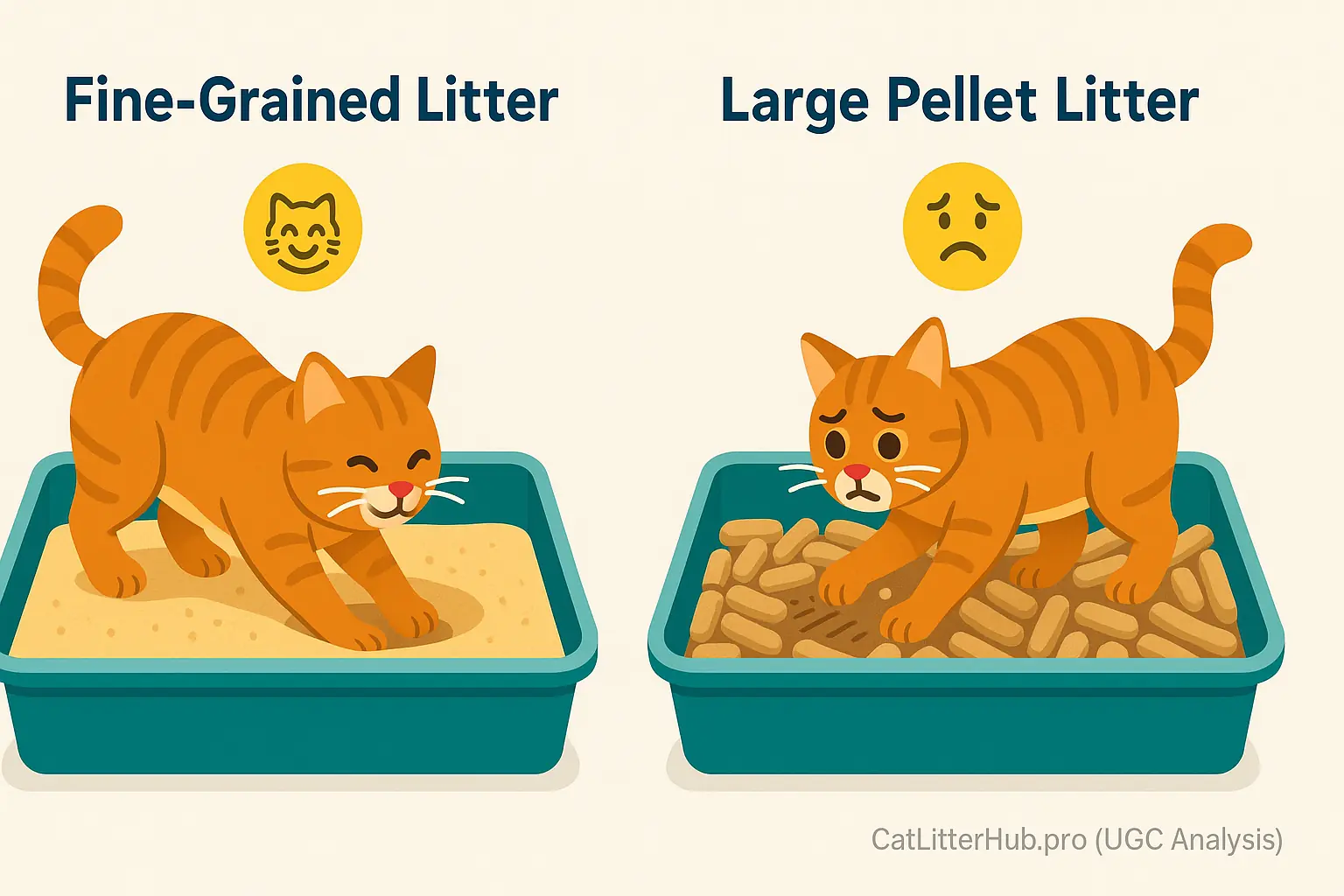
A cat’s gotta do what a cat’s gotta do. That includes some serious digging. Covering waste is also a core feline instinct. But what if the litter texture makes that essential job a nightmare for your furry friend? User observations highlight this exact problem.
Many cat owners report a clear preference. Fine-to-medium grained litters often allow cats to dig satisfyingly. Clumping clays, and some plant-based options like corn or wheat, frequently get positive mentions for this. Their cats dig with gusto. They create impressive craters. They meticulously cover their deposits. It's instinct in action, a common theme in user feedback.
Now, picture your cat trying to dig a decent hole in a box full of large, smooth pebbles. That’s the struggle owners describe when their cats encounter some large-pellet litters. User forums are filled with stories. Cats barely scratch the surface of these litters. Some felines abandon covering their waste entirely. Extremely lightweight litters that scatter wildly with minimal effort also draw similar complaints regarding digging and covering effectiveness. An interesting user tip frequently shared: for cats hesitant with pellets, a thin top layer of finer litter can sometimes encourage digging.
The consensus from owner experiences is unmistakable. The right litter texture supports a cat's natural digging and covering behaviors. Cats can perform these instinctual actions without frustration. This often leads to a happier cat. A well-covered deposit usually means a fresher-smelling home too, a benefit many users celebrate.
Special Case: Declawed Cats and Texture Sensitivity (UGC Wisdom)
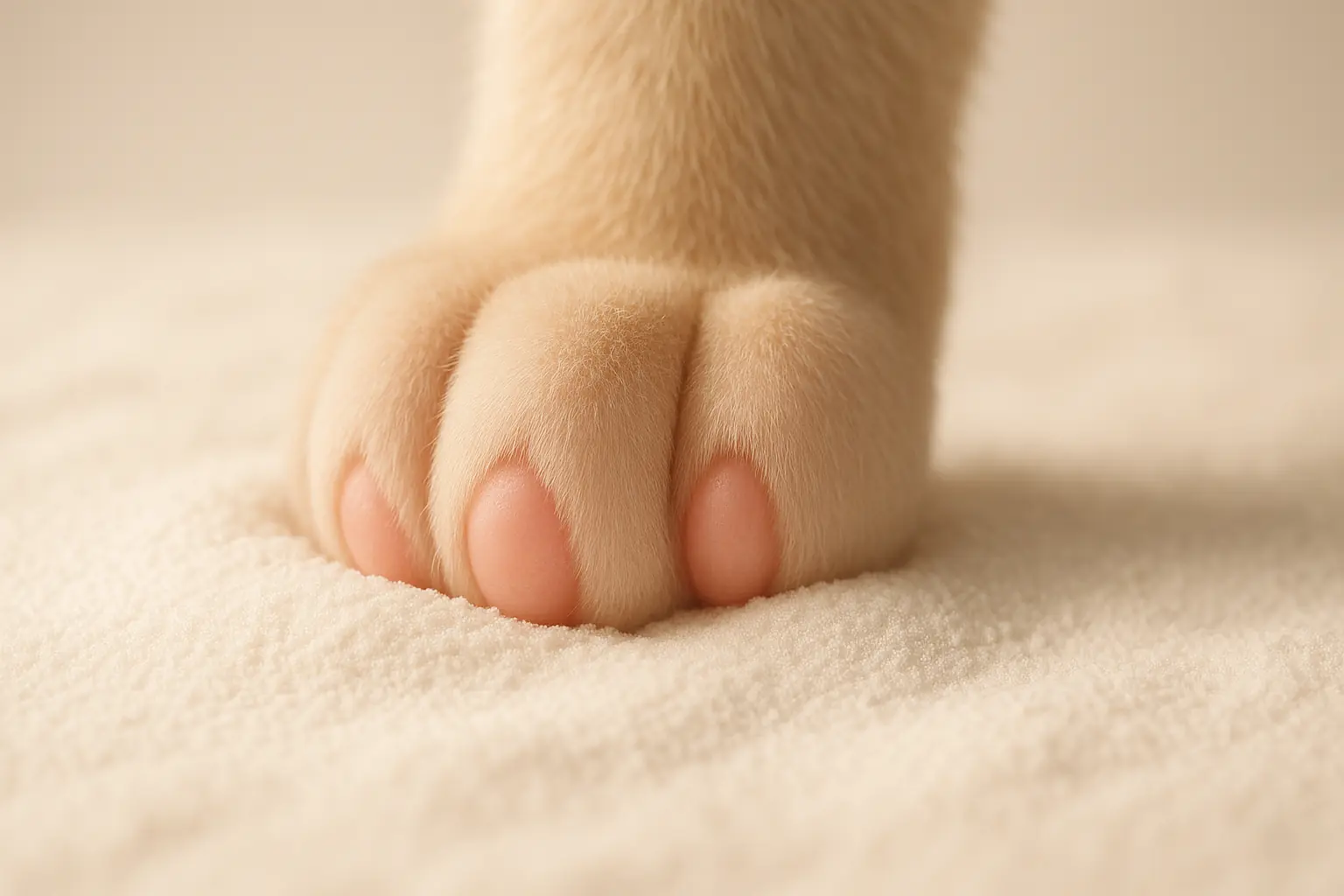
Declawing remains a sensitive subject. For cats who have undergone this procedure, litter texture transforms from mere preference. It becomes a critical comfort issue. Their paws require special consideration.
Owners of declawed cats consistently share their difficult experiences. These cats possess significantly increased paw sensitivity. What feels acceptable to a clawed cat can cause real pain for one without claws. Coarse grains feel like sharp rocks. Hard pellets are intolerable. Crystal litters often bring agony. Many declawed cats will simply refuse these litters. This refusal frequently leads to distressing out-of-box incidents. Owners report this heartbreak often.
The community of declawed cat owners offers clear guidance. Ultra-soft, very fine-grained litters usually provide relief. Think powdered sugar softness. This texture minimizes paw irritation. Some owners also report success with specific paper-based litters. Certain corn or wheat litters, known for their exceptionally gentle feel, also receive positive mentions from users. A vital tip from experienced owners: keep litter depth shallower for declawed cats. This reduces pressure on their tender paws.
For these special cats, priorities shift. The collective wisdom of owners with declawed cats is unequivocal. Paw comfort must outweigh other litter attributes. Odor control becomes secondary. Clumping ability takes a backseat. The primary goal is a pain-free litter box experience. This focus helps ensure consistent litter box use. It promotes the cat's well-being.
Finding Your Cat's "Purrfect" Texture: Key Takeaways & The Power of Observation
So, what is the big takeaway from all these owner stories? Simple: texture matters. How it feels under those furry paws can make or break litter box happiness. Our synthesis of user experiences consistently highlights this crucial point. Fine-grained litters generally receive positive feedback for cat acceptance. Conversely, numerous user reports indicate many cats dislike pellets and some crystal litters.
But here is the most vital advice from the collective wisdom of thousands of cat parents: watch your cat. They are talking to you. Hesitation before entering the box offers a clue. Quick exits tell their own story. Paw shaking after use is another clear signal. Even their digging style reveals texture preferences. Sometimes, the 'perfect' litter is not the most expensive. It is not the one with the splashiest marketing. It is the one your unique cat gives their silent, four-pawed approval to.
Trust your observations. They are incredibly powerful. Combine these personal insights with the shared community knowledge Cat Litter Hub provides. This informed approach empowers you. You can confidently choose the best texture for your feline friend. Ultimately, understanding your cat better is the true reward.
Related Insight: Myth: Cats Instinctively Cover Poop in ANY Litter. (UGC on Texture Aversion & Non-Covering)
Litter texture directly impacts more than just paw comfort. A surprising volume of user accounts detail cats suddenly refusing to cover waste. The common element in these reports? Often, a new, disliked litter texture.
This widespread user observation challenges a core belief about feline instincts. What if covering isn't always so automatic? We are analyzing extensive owner feedback. Specific textures are frequently linked to this non-covering behavior, busting a common myth.

